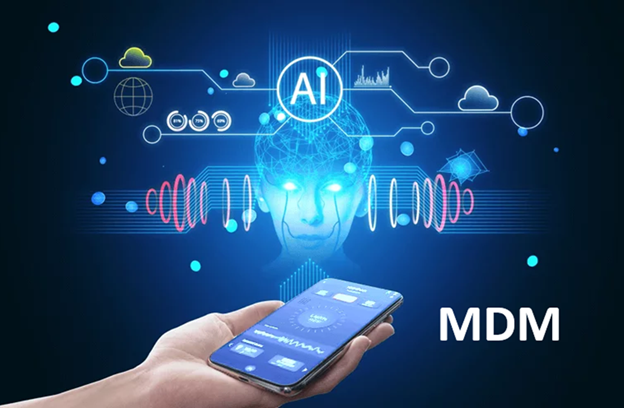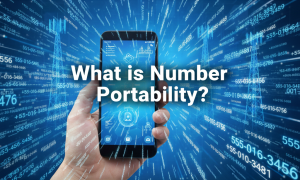Mobile Device Management Evolution
Mobile Device Management (MDM) is experiencing a profound evolution, propelled by the integration of cutting-edge technologies to address the escalating complexity of managing device fleets in corporate environments. These solutions, critical for provisioning, securing, and monitoring smartphones, tablets, laptops, and IoT devices, are advancing to meet heightened demands for robust security, seamless connectivity, and optimized productivity in a hyper-digital ecosystem. Modern MDM platforms leverage artificial intelligence (AI) and machine learning (ML) to enable real-time threat detection, predictive analytics, and automated policy enforcement, significantly enhancing security posture. For instance, AI-driven MDM systems utilize natural language processing (NLP) and behavioral analysis to monitor device activity, detect anomalies, and mitigate risks such as malware or unauthorized access, ensuring compliance with stringent regulations like GDPR, HIPAA, and SOC 2. The shift toward Unified Endpoint Management (UEM) represents a pivotal advancement, extending MDM capabilities to encompass a broader range of endpoints, including wearables, IoT devices, and desktops, managed through a centralized console. UEM platforms integrate advanced features like containerization for Bring Your Own Device (BYOD) environments, segregating corporate and personal data to enhance privacy while enforcing role-based access controls. Cloud-based MDM solutions, increasingly favored for their scalability and lower capital costs, leverage APIs and vendor-specific enrollment programs (e.g., Apple’s ABM, Android Enterprise) to streamline device onboarding and management across diverse operating systems like iOS, Android, Windows, and ChromeOS. Furthermore, innovations such as zero-trust security models, incorporating multi-factor authentication (MFA) and continuous device posture assessment, fortify defenses against sophisticated cyberthreats. These advancements, coupled with real-time geofencing and remote wipe capabilities, ensure data protection and operational continuity, even in remote or hybrid work scenarios, driving a projected market growth to USD 81.72 billion by 2032 at a CAGR of 26.5%
AI Integration in MDM
The integration of artificial intelligence (AI) into Mobile Device Management (MDM) platforms has catalyzed transformative advancements in task automation and dynamic policy orchestration. Leveraging machine learning (ML) models, including deep neural networks and reinforcement learning, modern MDM systems proactively identify vulnerabilities by analyzing historical and real-time telemetry data, such as device logs and network traffic patterns. Predictive analytics, powered by time-series forecasting and anomaly detection algorithms, enable preemptive mitigation of security risks, such as zero-day exploits or phishing attacks, bolstering corporate data protection in compliance with frameworks like NIST 800-53 and ISO 27001.
AI-driven MDM platforms optimize resource allocation by dynamically managing device parameters, such as CPU utilization, battery consumption, and storage partitioning, through adaptive control algorithms. For instance, ML-based resource management can prioritize critical applications, throttle background processes, and implement intelligent caching to enhance device performance and extend operational uptime. These systems also support context-aware policy customization, utilizing natural language processing (NLP) and behavioral analytics to tailor access controls and security policies based on user roles, geolocation, or device state. Integrated into Unified Endpoint Management (UEM) architectures, these capabilities ensure seamless operation across heterogeneous ecosystems (e.g., iOS, Android, Windows), enabling uninterrupted business continuity in hybrid and remote work environments while reducing operational overhead and enhancing endpoint resilience.
Remote Management and 5G connectivity
The integration of 5G network compatibility into Mobile Device Management (MDM) solutions has significantly enhanced remote management capabilities, delivering ultra-low-latency and high-bandwidth connectivity critical for enterprise operations. Leveraging 5G’s enhanced mobile broadband (eMBB) and massive machine-type communications (mMTC) features, MDM platforms achieve near-real-time data transfer rates, enabling IT administrators to perform instantaneous device monitoring, diagnostics, and troubleshooting across distributed endpoints. Advanced telemetry processing, supported by 5G’s high-throughput architecture (up to 20 Gbps peak downlink), ensures seamless management of data-intensive tasks, such as OTA firmware updates or real-time policy enforcement, even in high-density environments.
In sectors like logistics and transportation, where operational tempo and precision are paramount, 5G-enabled MDM systems optimize device orchestration by supporting real-time geofencing, asset tracking, and telemetry analysis for fleets of IoT-connected devices. For instance, edge computing integrations, facilitated by 5G’s low-latency network slicing (as low as 1ms), enable dynamic resource allocation and immediate anomaly detection, ensuring uninterrupted workflows. These capabilities, coupled with secure, encrypted communications over 5G’s NR security protocols, empower IT teams to maintain robust control over heterogeneous device ecosystems (e.g., Android, iOS, embedded IoT) in fast-paced mobile scenarios, enhancing operational efficiency and data integrity while meeting stringent industry requirements.






